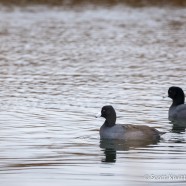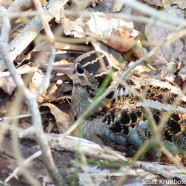Have a Drink
It is getting tough to find a drink out there in the frozen tundra. If you have any heated bird baths or ponds near your home you may end up with far more than songbirds stopping by! Consider setting something up in your yard to see what wildlife you may assist during these difficult months.
Read MoreAmerican Coots
A species such as these American Coot (Fulica americana) entered January finally having to find some open water as the freezing line has penetrated regions like Chautauqua County, quickly locking up the open water of small ponds and waterways. While Lake Erie can still provide a comfortable spot for many waterfowl this winter others will migrate south to the Atlantic Coast and warmer shoreline quarters. These American Coots are actually in the rail family and more closely related to Sandhill Cranes than their duck friends, and if you have ever seen their legs and feet out of the water then...
Read MoreUnfrozen Waters
Staring through the trees and seeing an unfrozen pond is a very common sight right now in the end of autumn when, at the most, we have a slight bit of ice or a little frost here and there. While everything “feels” like winter with a low sun, brown, decaying vegetation, and the cold “look” to the environment, our days are warming to historic levels. Whether it’s the weather or the climate – and in this case it’s both – nature has a strange feel to it at the moment thanks to El Niño.
Read MoreNorthern Mockingbird
The Northern Mockingbird does not need a mask because its incredible vocal range can turn it into nearly anything imaginable. Depending on where you live Mimus polyglottos may be an uncommon to rare species or a typical neighborhood pest. They have been advancing north in the past several decades, possibly because of development and more favorable habitats and likely thanks to climate change. They are still a scarce bird in the Chautauqua-Allegheny region likely for both of those reasons, as well as our higher elevation. Why the pest, you ask? One day, if you’re fortunate, you may wake up to...
Read MoreHidden American Woodcocks
March is the month for the American Woodcock (Scolopax minor) as the species heads north to (hopefully) unfrozen earth, with males arriving as quickly as they can to set up on the best territory for their legendary display flights. This year’s polar lock on the region may slow them down as feeding will be very difficult, if not impossible, for another week or two at least. Open fields and meadows adjacent to wetlands, marshes and scrubby/shrubby lands are good places to wait for their evening aerial dances later in the month. I photographed these two birds in the early winter, long...
Read More








